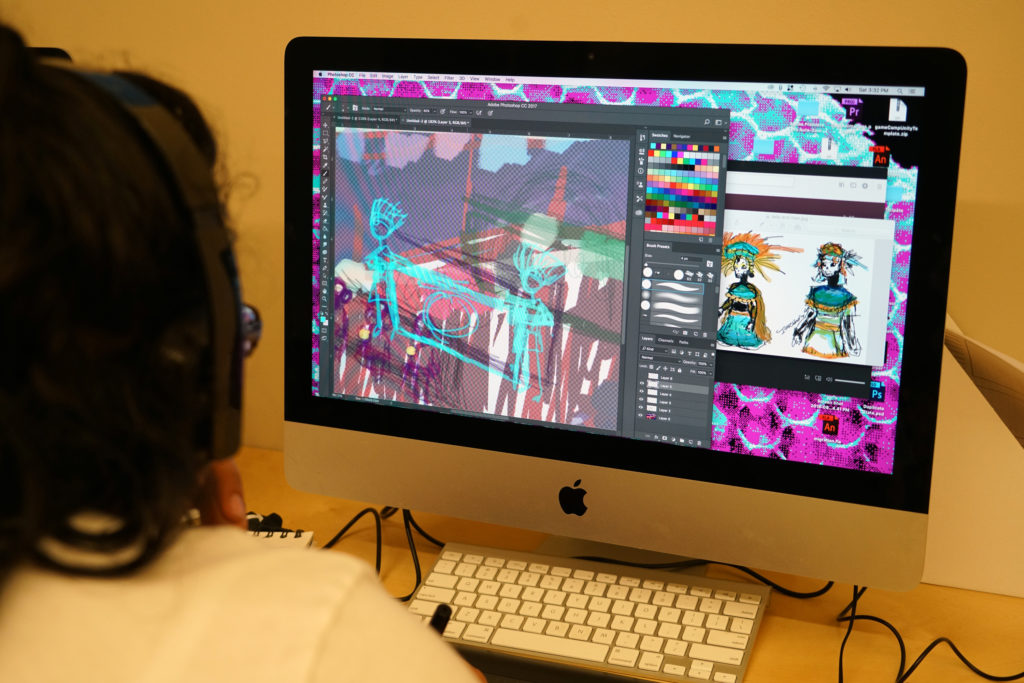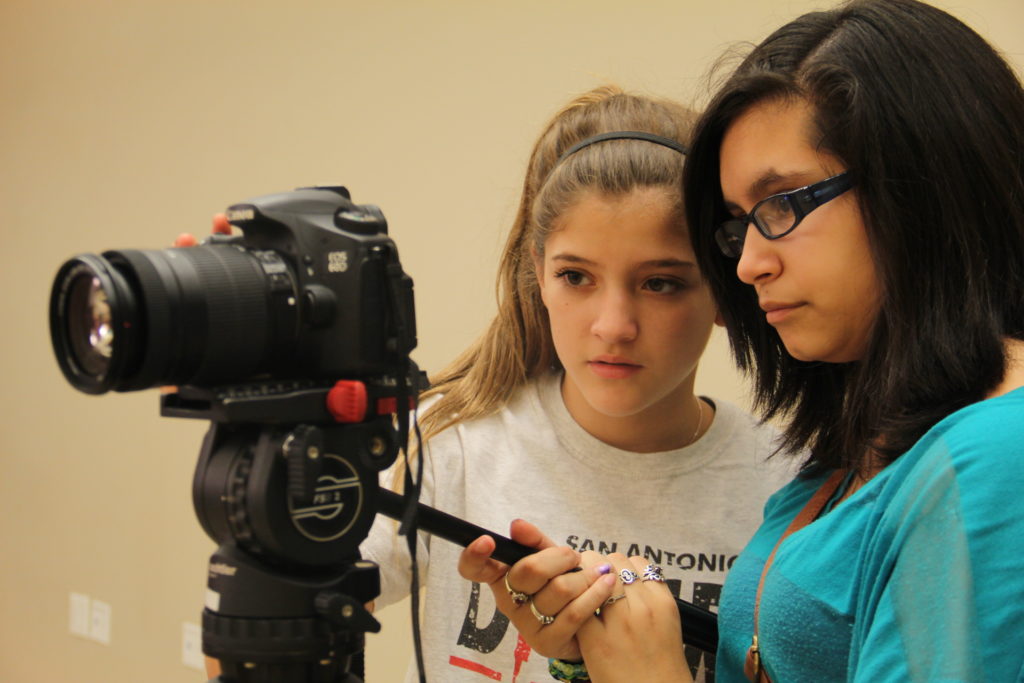SAY Sí—an SA2020 Nonprofit Partner that provides after-school arts programs to middle- and high-schoolers—knows that students who consistently arrive to their building to participate in programming succeed in the classroom, and beyond.
Over the last 17 years, their numbers prove it: 100% percent of high school seniors in SAY Sí graduate from high school, and 98% get accepted into college.
This, in Bexar County, where college enrollment has remained relatively flat since 2010 at 50%.
And for SAY Sí’s Class of 2021 seniors—21 graduates total—half of them participated in the program since middle school.
“From the very beginning, our mission has been focused on equity and access,” said Stephen Garza-Guzman, Co-Executive Director of SAY Sí.
SAY Sí, which opened in 1994, relocated this summer to 1310 South Brazos—a four-minute drive from Lanier High School on the Westside.
SAY Sí staffers serve more than 100 students representing over 70 schools—a dip in usual participation related to the pandemic. Even more so now, the staff understands how critical it is that each student has a safe and reliable ride to their facility. They emphasized to parents and guardians that the new location is only five minutes away from their previous space.

Ebony R., a senior at KIPP University Prep High School, doesn’t need a ride to SAY Sí because she walks there after school due to its proximity. Alyssa H., a senior at Lee High School, relies on her folks for transportation, but they also wouldn’t allow her to take the VIA bus if something were to interfere.
To address this ever-present need, SAY Sí recently formed a committee on transportation access comprised of their board members.
Paola Fernandez, Urban Planner and Community Engagement Specialist at Able City, and member of SAY Sí’s transportation committee, spoke on the ongoing work of the committee.
“Providing resources, information, and tutorials on how to access alternative modes of transportation will get us one step closer to providing equitable access to students,” Fernandez said. “We do this by helping students and parents find safer, reliable transportation options—connecting and providing them with the tools that will empower them to drive, walk, bike, or bus to campus.”
So far, the committee has helped create walkability maps and informational material on how to safely ride bicycles.
“To maximize opportunities, we look at schools where students come from and encourage parents to carpool,” said Nicole Amri, Co-Executive Director of SAY Sí, and 2006 alumna of SAY Sí. “That’s usually a great way to help foster relationship-building.”

Increasing alternative transit use is a goal of the shared Community Vision set by San Antonians. As of 2019, 15% of workers age 16 and over in the city traveled by carpool or public transportation, a slight increase over what was reported in 2010 during the original visioning process.
Nicole said when students apply to SAY Sí, they’re asked upfront what their mode of transportation is.
“Cars breaking down, students moving so they can’t come anymore, these are common stories,” Nicole said. “Sixty to 65% of our students rely on their person of transportation. About a third struggle figuring out transportation, then 10-15% we really have to worry about how they’ll get here.”
Considering the burdens that affect students’ access to SAY Sí, including gas costs being too high or households lacking an available vehicle, Nicole said the organization is working to strike a partnership with VIA that would present free bus passes to SAY Sí’ers.
On average, according to the Housing and Transportation (H&T) Index, San Antonians spend over $12,000 a year on transportation, the second-highest annual expense after housing.
This attention to transportation is part of how SAY Sí is assessing “economic and class barriers,” Stephen said.
“We’ve had parents waiting outside a couple hours as their students created art inside,” he said. “When they come to SAY Sí, we want those barriers to disappear. We’re a community of support.”

